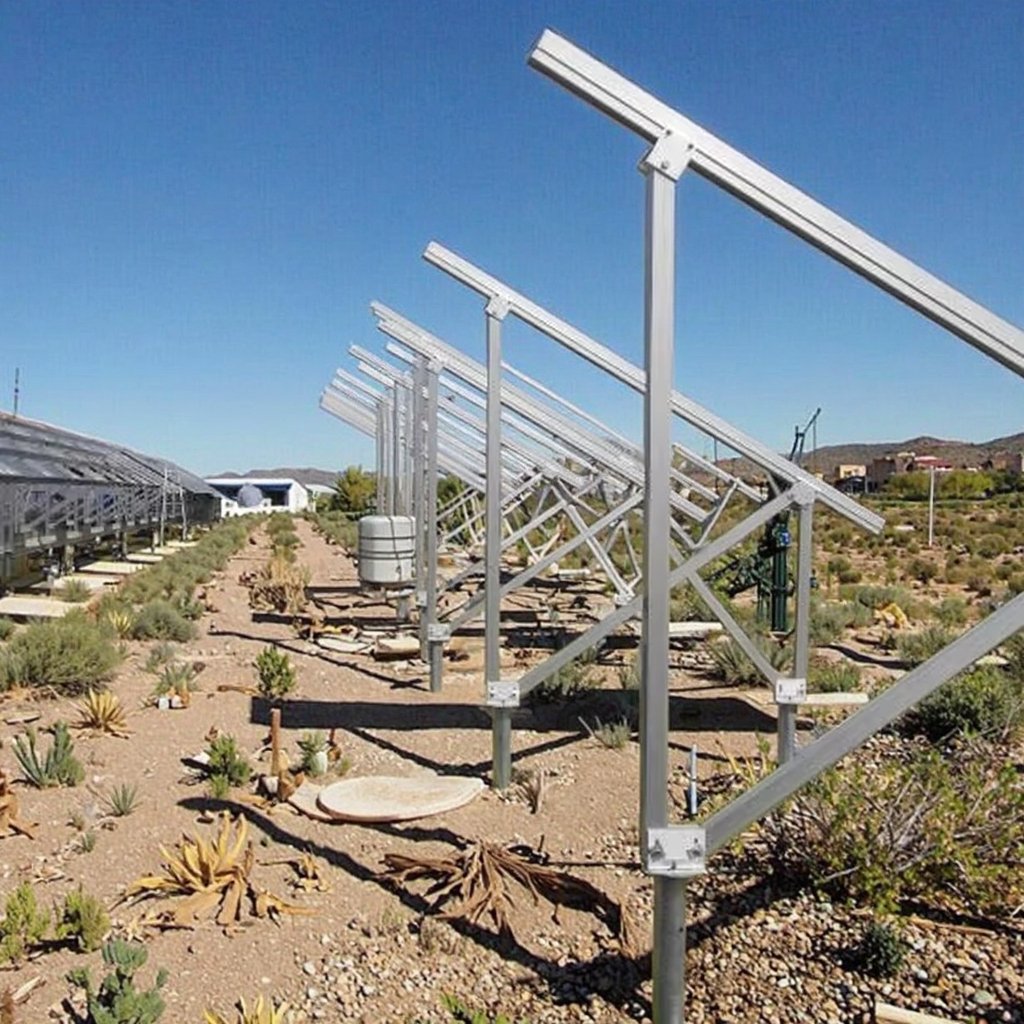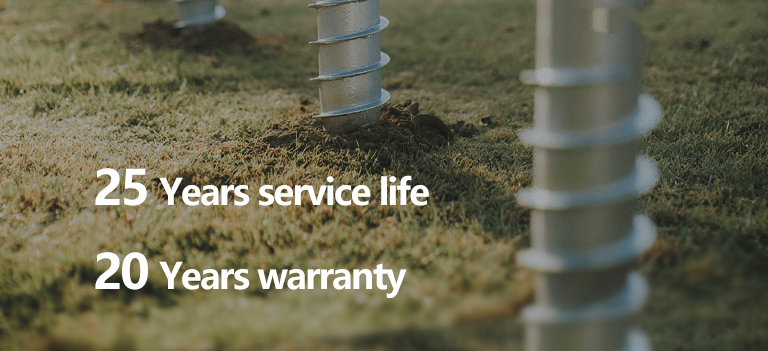-
2103 Room NO.322 Xinggang One Road,Haicang District,Xiamen Fujian,China

Should You Use Screw Piles for Solar Foundations? Benefits, Drawbacks, and Installation Guide
Table of Contents
Are you unsure whether to use screw piles for your solar power plant foundations? With multiple options available, it’s important to understand the pros and cons. Objectively speaking, screw piles offer significant advantages and are widely chosen by many developers.
This article explains the benefits and drawbacks of screw piles, as well as how screw pile installation works. If you want to deepen your understanding, read on.
What Are Screw Piles?
Screw piles are used as foundations for solar mounting systems. These piles are driven into the ground to support the racking structure. While dimensions vary by manufacturer, most are between 1,000–2,500 mm in length and φ76–165 mm in diameter.
A key feature of screw piles is the helical blade near the tip. This thread-like blade grips the soil tightly, preventing movement from vertical and lateral forces. Some models are designed with larger helices, making them ideal for softer soils by improving grip.
👉 Related Product:
Hot-Dip Galvanized Screw Pile for Solar Ground Mounts

Advantages and Disadvantages of Screw Piles
Benefits
- Cost-effective: Generally more affordable than concrete foundations, as screw pile lengths can be adjusted without extensive land leveling.
- Shorter installation period: No need to wait for concrete curing.
- Easy to remove: Since there’s no concrete, the piles can be unscrewed from the ground during decommissioning.
- Adaptable: Can be used on sites with moderate slopes or height variations.
👉 Recommended Application:
Ground Mounting Systems with Screw Pile Foundations
Drawbacks
- Not suitable for all soils: Soft or obstacle-rich grounds may lack the necessary pull-out strength or prevent proper pile insertion.
- Risk of misalignment: Subsurface rocks or roots can cause deviation.
- Corrosion risk: Steel piles are susceptible to rust, although zinc galvanization effectively mitigates this.
💡 Note: It’s essential to survey ground conditions before installation to avoid future issues like sinking or structural failure.
How Screw Pile Thickness Affects Strength
Screw pile thickness directly influences strength—the thicker, the stronger. A typical screw pile (e.g., φ76) ranges between 2.5–3.5 mm in wall thickness, which is usually sufficient.
However, quality can vary by manufacturer. To avoid product failure:
- Purchase from a reliable manufacturer
- Inspect delivered products for compliance with specifications
👉 Explore:
Heavy-Duty Flanged Screw Pile with Adjustable Height
What Kind of Land Is Suitable for Screw Piles?
To effectively use screw piles for solar installation, look for land that meets these conditions:
- Firm soil conditions
- Flat or gently sloping terrain
- Minimal need for land leveling
- Good sunlight exposure
- Existing utility infrastructure
Avoid:
- Soft soil
- Buried obstacles like rocks or debris

Tools and Procedures for Screw Pile Installation
Specialized Attachment: Auger
A hydraulic excavator (backhoe) with a screw pile attachment, typically called an auger, is used. The auger drills into the soil while rotating the pile vertically.
Layout Marking
A surveying instrument is used to mark each pile’s exact position according to the design blueprint. Inaccurate marking leads to alignment issues, so this step is critical.
Driving the Screw Piles
Once marked, operators use the auger-equipped excavator to insert the piles vertically. Speed and accuracy depend on the skill of the operator—experienced crews can install a pile in just a few minutes.

For High-Quality Screw Piles, Trust Firstsolar
If you’re looking for reliable screw piles for your solar project, Firstsolar is here to help. We manufacture and supply:
- Standard Galvanized Screw Piles
- Adjustable Flanged Screw Piles
- Solar Mounting Systems for Screw Foundations
As the original manufacturer, we offer factory-direct prices and strict quality control.
Conclusion: Understand the Pros and Cons of Screw Piles
Screw piles offer a fast, cost-effective, and removable foundation option for solar installations—especially where minimal site prep is desired. But proper site evaluation and supplier selection are crucial to avoid costly mistakes.
If you’d like help evaluating your project site or choosing the best pile type, don’t hesitate to contact our team.








